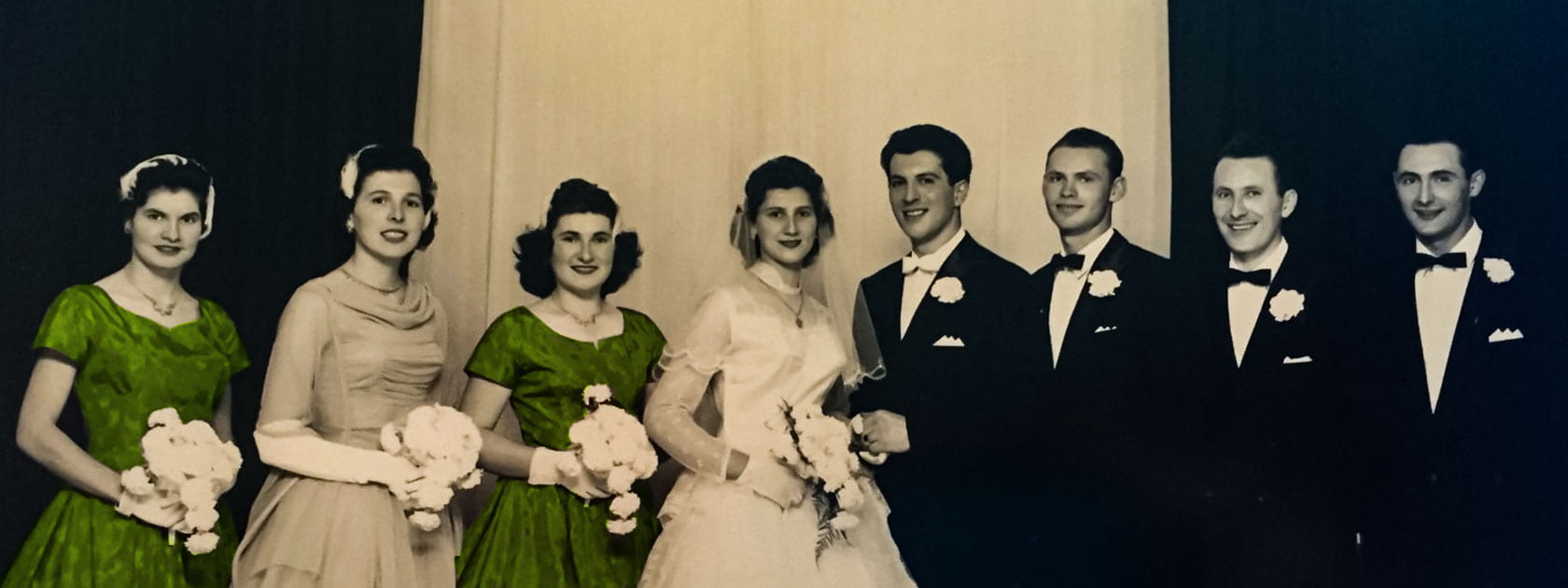Date
June 13, 2011
Maker
Columbus Centre
Accession#
ICEA2011.0034.0001
Interview 1 With Frank Martinello
Frank Martinello is the son of internee, Felice Martiniello, and the brother of Ann (née Martinello) Dolson who was also interviewed for this project. Felice Martiniello and his parents emigrated from Italy to Sydney, Nova Scotia in the early to mid 1920s. Upon Felice’s arrival in Canada, the family last name was changed to “Martinello” from “Martiniello” due to an error on the landed immigrant card. Felice continued to use the original spelling of his family name, while the rest of his family adopted the new spelling. In this interview Frank talks about his father arrest on June 10, 1940. Upon his father’s release in January or February of 1943, the family moved to Hamilton, Ontario since the government instructed Felice that he could not go back to Nova Scotia. Frank describes his childhood memories of life with and without his father and how his family coped during World War II.
Frank Martinello introduces himself. He speaks of his parents and his earliest childhood memories.
Frank Martinello discusses when his parents migrated to Canada. His father migrated first in the early 1920s after having served in the army during World War I. His mother and siblings came later through New York to Sydney where they were reunited with Felice Martiniello.
In this clip Frank Martinello speaks about his siblings, giving their names and the years in which they were born.
Frank Martinello grew up in Sydney, Nova Scotia. In this clip he discusses the neighbourhood he grew up with, its ethnic make-up and the various surroundings. He also speaks of the Italian traditions he grew up with and being surrounded by an extended family.
Frank Martinello discusses the various social groups that the Italian community was involved with. He mentions that his father was a member of the Casa d’Italia and that he himself went to Italian school. While his father was involved in these social clubs he does not believe that his father was politically active, but only participating in Italian functions.
Frank Martinello talks about the schools he attended while growing up in Sydney, Nova Scotia.
In this clip Frank Martinello shares his experiences of being an altar boy at the local church in Sydney, Nova Scotia. During his father’s internment the family discovered that the parish priest might have been involved in the internment of local men and Frank quit his role as altar boy.
Frank Martinello discusses the jobs he took delivering papers and shining shoes while his father was interned. Any money he earned would help to support the family during this period. Frank and his sister Ann Dolson mention that they would bury the money in cans in the backyard since their mother was afraid that the RCMP would come and confiscate their funds.
Frank Martinello discusses the day his father was arrested by the RCMP. His father, Felice, was arrested while working in the fields at their family home in Sydney and taken to the local jail with other Italian Canadians men from the area. Frank mentions that there was an altercation while the men were in jail, however, the family was not allowed to see Felice.
Frank Martinello discusses what it was like at home during the period his father Felice Martiniello was interned. Their mother had to manage a house of seven kids and provide for them. The children often helped their mother, along with family and neighbours. However, Frank does remember their home situation being difficult and that food was often scarce.
Felice Martinello was interned for three years. In this clip Frank Martinello mentions that when his father was released he was not permitted to move back to Nova Scotia and so the family moved to Hamilton where they were eventually reunited.
In this clip Frank Martinello continues discussing the family’s move from Sydney, Nova Scotia to Hamilton, Ontario. He discusses how the family had to take a number of trains to get to Hamilton, with all their belongings in tow, and their reunion with their father.
Frank Martinello talks about his father’s employment situation after he was released from the internment camp up until his retirement.
Frank Martinello briefly discusses his father’s role in the army during World War I. He also mentions that his family only began to receive a pension for his service after his death.
Frank Martinello discusses what he knows about his father’s time in the internment camps. His father always enjoyed cooking and while at the camps he took on the role of cooking for fellow internees as well as the camp guards.
Frank Martinello discusses the wooden carvings his father made while he was interned as a way to pass the time.
In this clip Frank Martinello mentions that when his father was instructed that he must move from Nova Scotia as a condition of release, he chose Hamilton because he had formed close friendships with people from this area while he was interned. Frank talks about how these relationships were maintained after the war years.
In the conclusion to his interview, Frank Martinello mentions that his father did not speak much about his internment experience after he returned home. Frank and his sister, Ann Dolson, only recall their father referring to the period as his time in the college. Frank also discusses his feelings on the period.
Date
December 06, 2011
Maker
Columbus Centre
Accession#
ICEA2011.0034.0002
Interview 2 With Frank Martinello
In his second interview Frank Martinello speaks further about his family life during his father’s internment. Frank also talks about missing out on some of his childhood and schooling because he had to work hard to maintain the house and the farm while his father was away. The interview continues with Frank presenting a number of objects that he received from his father, many of which were brought back in a chest from the internment camp. The objects include a ship in a bottle, a belt made out of cigarette packages, and a portrait of Felice drawn by fellow internee and artist, Guido Casini. There are also two watercolour portraits of Frank and his sister, Florence. Their father requested photographs of them to be sent to him in the camp and had these portraits created by a fellow internee. The interview ends with Frank going through a family photo album and pointing out the members of his family in the pictures.
In this opening clip Frank Martinello provides further insight into what life was like at home for Frank and his family while his father was interned and speaks about how his life might have been different if his father was never interned.
In this clip Frank Martinello speaks about the items that his father brought back with him from his time in the internment camps. In particular he speaks about and displays two items, a ship in a bottle and a belt.
Frank Martinello speaks about the sketch of his father created in the internment camp by fellow internee Guido Casini. The sketch is displayed in the clip.
Frank Martinello talks about one of the two paintings that were created in the camp by a fellow internee. In this clip the portrait of Frank is on display.
Frank Martinello talks about the second of the two paintings that were created in the camp by a fellow internee. In this clip the portrait of his sister Florence is displayed.



